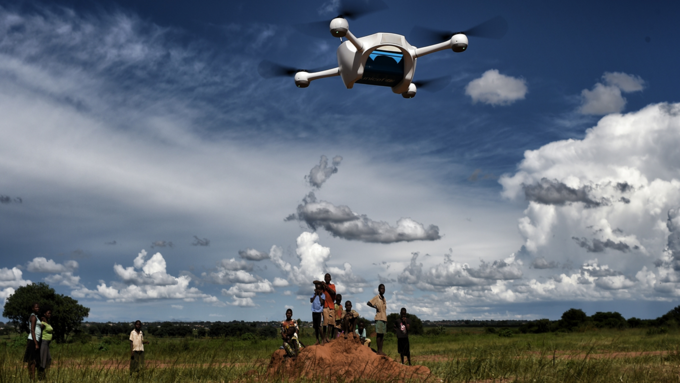Drones to Deliver Tuberculosis Drugs in Madagascar
15.07.2020
The use of drones in global health settings has rapidly evolved in the past years. As drone technology continues to expand beyond the military and recreational sectors, it is foreseen that it will have a significant role to play in healthcare delivery. A project supported by Swiss TPH tested the usefulness of drones in transporting tuberculosis drugs and diagnostic samples in Madagascar, and has found that in combination with other innovative interventions, they can be both cost-effective and contribute towards the goal of universal health coverage.

The integration of drones with other technology interventions in health systems has the potential to support access to universal health coverage. (Photo credit: Messinis/Matternet)
Tuberculosis (TB) is the leading infectious disease killer globally, surpassing HIV/AIDS and malaria, with 10 million new cases estimated in 2019. Among those, three million cases are undiagnosed or unreported and thus contribute to the continued epidemic. Innovative interventions are needed as conventional approaches alone are predicted to fail to meet the World Health Organization's goal of eliminating TB by 2035.
Some of the biggest challenges that low- and middle-income countries face when it comes to quality TB care include limited financial resources, weak diagnostic laboratory infrastructure, limited transportation infrastructure and more. To overcome some of these obstacles, a project called the Drone Observed Therapy System (DrOTS), which was led by the Stony Brook University and the Institut Pasteur de Madagascar and supported by Swiss TPH, explored the use of drones in the rural district of Ifanadiana in Madagascar. The drones transported biomedical samples and medicines over long distances from peripheral health facilities to remote villages.
"Drones represent a promising approach to improve and remotely monitor TB treatment adherence and have the potential to revolutionise healthcare supply chain systems, facilitate surveillance in geographically challenging regions and support emergency response. DrOTS and its components can improve healthcare delivery in resource limited settings, such as Madagascar, also going beyond TB" said Astrid Knoblauch, M&E lead of DrOTS at Swiss TPH, who was supported by the Rudolf Geigy Foundation.
Bi-directional drones
The Drone Observed Therapy System (DrOTS) project used new drone technology to gain access to some of the world's most inaccessible communities. The goal was to facilitate the transportation of medical supplies, eliminating the need for patients to embark on the often lengthy and arduous journey to health facilities. The use of drones helps to provide patient-centric care to thousands of people, and may help in finding some of the missing millions of TB cases in low- and middle-income countries.
While much potential exists, extensive work still lies ahead to ensure that drone technology can be successfully integrated into health systems. Continued long-term investments and implementation are required to assess the technology's impact. For the sustainable integration of drones into health systems, in-country capacities and markets and businesses to operate a drone-support system locally are still needed.
Stay connected
Subscribe to our newsletter and get all the latest research news, project updates, course and event listings from Swiss TPH.
